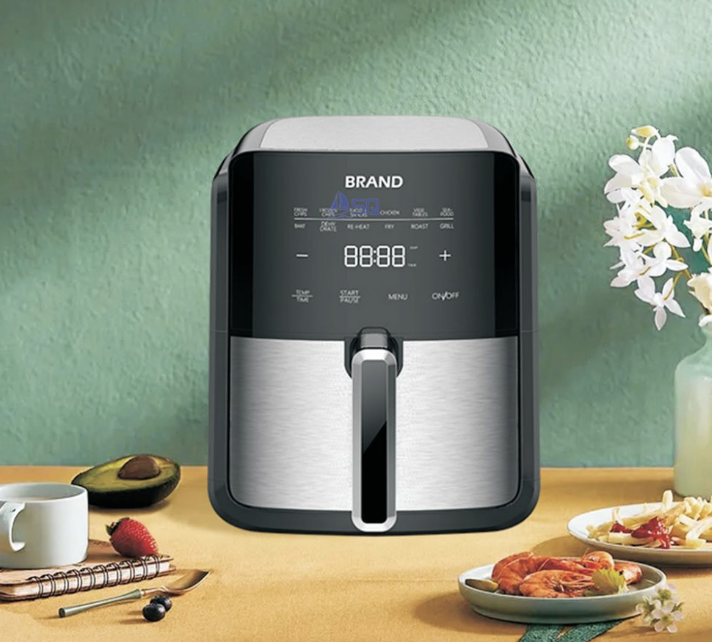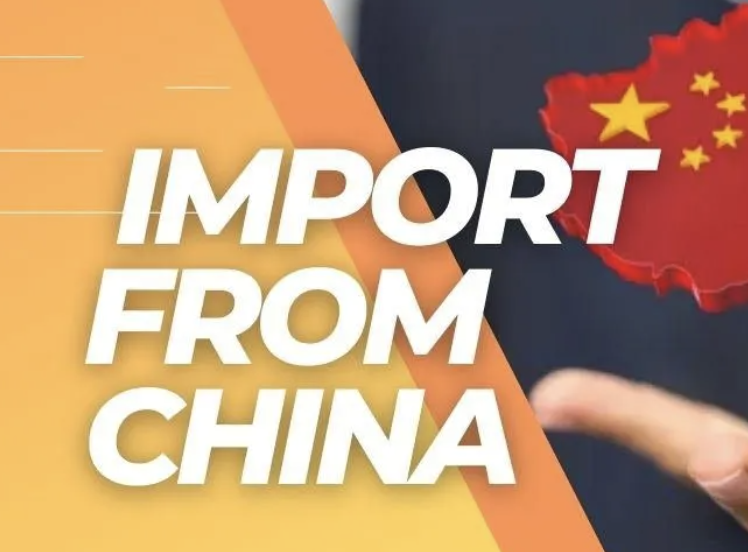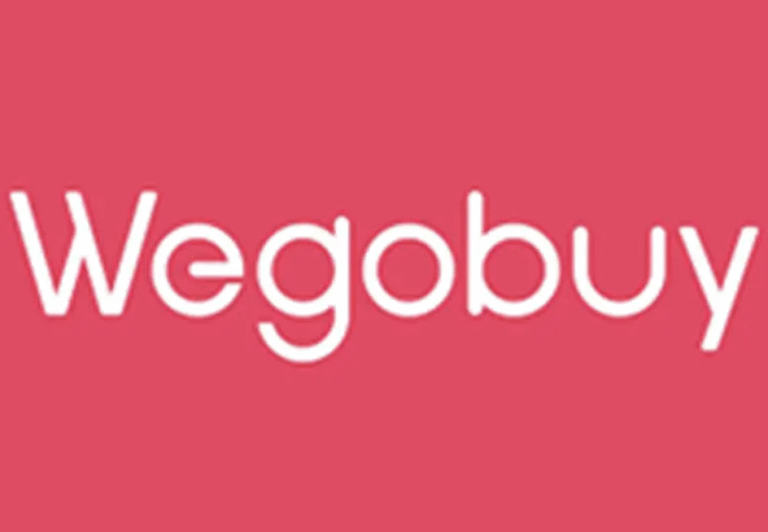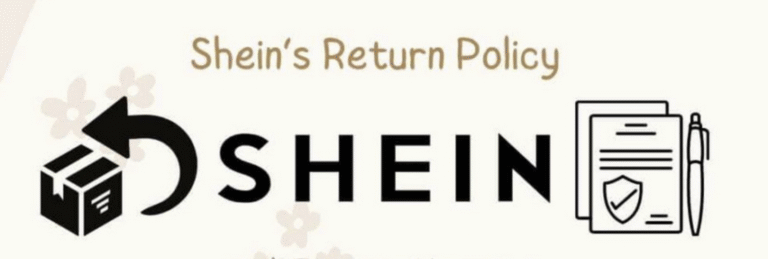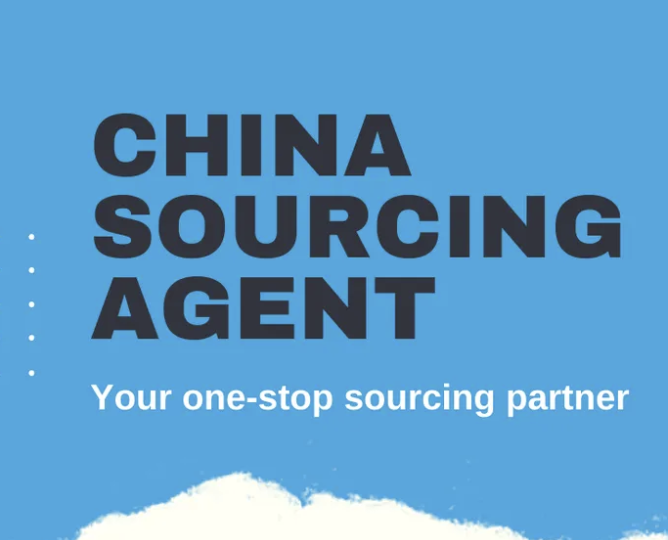How to Import Airfryer from China: Read This Review Before You Buy
Airfryers are everywhere—from TikTok cooking hacks to kitchen countertops in millions of homes. As consumers become more health-conscious and crave quick, oil-free cooking, airfryers are exploding in popularity.
If you’re an entrepreneur or business owner looking to break into the appliance market, you’ve probably considered how to import airfryers from China.
This guide walks you through the complete process—how to choose the right manufacturer, manage shipping, avoid rookie mistakes, and customize your airfryer brand.
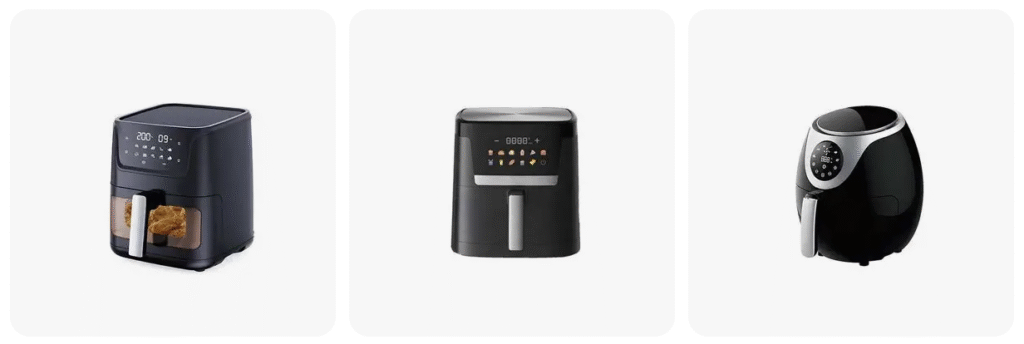
By the time you’re done, you’ll know exactly how to launch your own product line or add this hot item to your existing catalog. And trust us, Read This Review Before You Buy—it’ll save you time, money, and stress.
Table of Contents
Why Airfryers Are in High Demand Worldwide
Let’s start with some context. Airfryers have turned from a trendy kitchen gadget into a must-have cooking appliance. Here’s why they’re selling out globally:
Health Trends
Consumers want healthier alternatives to deep frying. Airfryers use up to 80% less oil, while still delivering that crispy texture.
Convenience
- Quick preheat and cook times
- One-button controls for fries, chicken, fish
- Less mess and easier cleanup
TikTok & Influencer Culture
With viral recipes and food hacks everywhere, airfryers are now central to modern home cooking—especially among Gen Z and millennials.
Retail Boom
Brands like Ninja, Cosori, and Instant have made millions. And yet, there’s still room for white-label, niche, or budget airfryers—especially if you import smartly from China.
Why Import Airfryers from China?
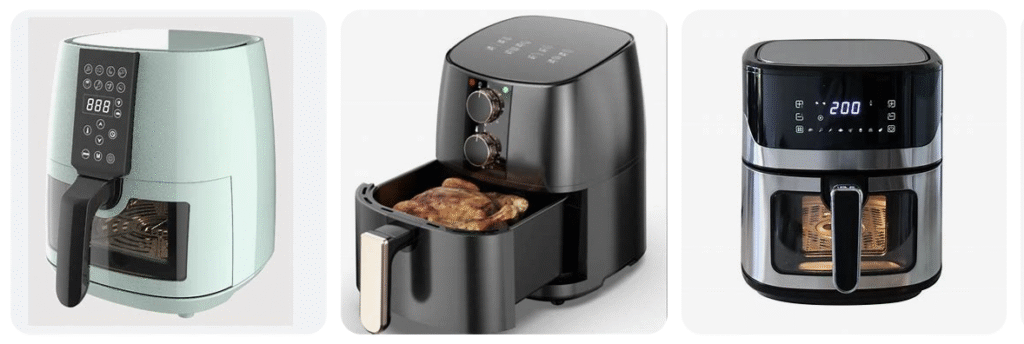
China is the undisputed global leader in airfryer production. If you’re planning to sell under your own brand, or simply want to source in bulk for resale, here’s why China is your best option:
1. Advanced Manufacturing
Factories in Guangdong, Zhejiang, and Jiangsu produce millions of airfryers monthly. These facilities use high-end molding, heating, and digital control components sourced locally.
2. Technology & Innovation
Many Chinese manufacturers offer:
- Touchscreen interfaces
- Dual baskets
- Rotisserie and oven-style options
- Smart Wi-Fi control for app integration
You can choose from a wide variety of base models and request customizations.
3. Cost-Effective Production
Labor, raw materials, and tooling are more affordable in China. Even with shipping costs, your landed cost can beat local options by 40–60%.
4. OEM/ODM Services
China is ideal if you want to build your own brand. From logo printing to custom UI screens and packaging, many factories are set up for OEM orders.
5. Experience with Global Export
Manufacturers understand CE, UL, and FDA requirements. Many already export to Amazon sellers, EU distributors, and U.S. retailers.
Understanding Airfryer Product Types
Before you import, you need to understand the product categories available so you can choose the right models for your audience.
1. Basket-Style Airfryers
- Most common
- Round or square design
- 2L to 8L capacity
- Digital or manual control
- Easy for single meals or snacks
2. Oven-Style Airfryers
- Larger capacity (10L to 25L)
- Often includes trays, rotisserie spit, and glass door
- Looks and functions like a mini oven
- Perfect for family meals and batch cooking
3. Dual Basket Airfryers
- Cook two dishes at once
- Separate timers and temperatures
- Growing in popularity in Western markets
4. Manual vs Digital
- Manual: Knobs for temp and time
- Digital: LED screen with presets, Wi-Fi controls
- Choose based on your target price range and market preferences
Choose your model type based on:
- Target demographic (single adults, families, professionals)
- Retail channel (Amazon, eCommerce, wholesale, physical stores)
- Price point ($30 budget or $100+ premium)
Key Certifications You Need to Sell Airfryers Globally

When importing airfryers, compliance isn’t just a formality—it’s mandatory. Selling non-certified appliances in markets like the U.S. or EU can lead to customs rejections, product bans, or even lawsuits. So, before signing any contract, make sure your Chinese manufacturer can provide the certifications and testing you need.
1. CE Certification (Europe)
Required For: EU markets
Covers: Safety, health, and environmental standards
Why It Matters: Without a CE mark, your products can’t be legally sold in Europe.
2. RoHS Certification
Required For: EU markets
Covers: Restriction of hazardous substances like lead, mercury, and cadmium
Why It Matters: Ensures your airfryers are safe for the environment and meet green compliance standards.
3. FCC Certification (United States)
Required For: U.S. markets (especially if product emits any form of electromagnetic radiation)
Covers: Electronic interference with other devices
Why It Matters: Essential if your airfryer has a digital control panel or Wi-Fi connectivity.
4. UL or ETL Certification (United States & Canada)
Required For: Selling to U.S. retailers (Amazon, Walmart, etc.)
Covers: Electrical safety
Why It Matters: Big retailers require it; lacking UL or ETL means limited sales channels.
5. FDA Compliance
Required For: Any part of the appliance that touches food (basket, tray, rotisserie)
Covers: Food-grade standards
Why It Matters: Ensures non-toxic coatings and safe food contact.
6. CB Scheme
Useful For: Selling in multiple global markets (Asia, South America, etc.)
Why It Matters: Simplifies certification acceptance across multiple regions.
Pro Tip: Request copies of these certifications from your supplier before placing an order. If they can’t provide them, move on.
Also, consider third-party testing (SGS, Intertek, TÜV) for private label assurance. If you work with a sourcing agent like Simoosourcing, they’ll handle all this for you.
Top 5 Airfryer Manufacturers in China
Choosing the right manufacturer is arguably the most important part of importing airfryers. These five Chinese companies stand out for their reliability, product range, export experience, and customization capabilities.
1. Zhongshan Hongwang Electrical Appliance Co., Ltd.
Location: Guangdong Province
Founded: 2009
Specialty: Digital airfryers, large-capacity models
Highlights:
- FDA, CE, RoHS, and ETL certified
- Offers OEM/ODM services
- Supplies major Amazon and Walmart sellers
- Advanced production equipment
Downsides:
- MOQs start at 1,000 units
- Pricing higher than smaller factories
2. Ningbo Invo Living Electric Appliance Co., Ltd.
Location: Zhejiang Province
Founded: 2012
Specialty: Compact and multi-function airfryers
Highlights:
- Smaller MOQs (as low as 500 units)
- Excellent for budget-friendly models
- Fast sampling turnaround
- Popular among eCommerce sellers
Downsides:
- Limited high-end product range
- Less suited for premium branding
3. Shenzhen Acoo Electrical Appliance Co., Ltd.
Location: Shenzhen, Guangdong
Founded: 2016
Specialty: Wi-Fi connected and smart airfryers
Highlights:
- Offers app integration and touch controls
- Works with U.S./EU DTC brands
- Accepts custom UI designs and private labeling
- ISO9001, CE, FCC, and RoHS certified
Downsides:
- Slower communication
- Lead times can stretch with high demand
4. Foshan Shunde Donglai Electric Appliance Co., Ltd.
Location: Foshan, Guangdong
Founded: 2007
Specialty: Oven-style and large airfryers
Highlights:
- Strong in high-capacity, rotisserie models
- Dual function appliances (airfryer + toaster oven)
- Factory tours available for buyers
- BSCI & CB certified
Downsides:
- Minimum order volumes of 1000+ units
- Limited variety in small-size fryers
5. Cixi Sinco Electrical Appliance Co., Ltd.
Location: Ningbo, Zhejiang
Founded: 2004
Specialty: Manual control airfryers for emerging markets
Highlights:
- Great for wholesale resellers
- Offers energy-efficient models
- Strong internal QA team
- Products shipped globally to over 50 countries
Downsides:
- Basic designs, fewer smart features
- Slower innovation pipeline
Case Study: Successful Importer’s Journey to Launching a Private Label

Meet David, a U.S.-based entrepreneur who wanted to capitalize on the booming airfryer market. With no prior experience importing appliances, he knew one wrong move could cost him thousands.
The Challenge:
- Needed a reliable airfryer supplier for under $25 FOB
- Wanted CE and FDA certifications for Amazon EU
- Required 1,000 units, fully customized with his brand’s logo
The Solution:
David hired Simoosourcing to manage the process. They:
- Shortlisted three verified factories with past export success
- Collected material safety reports and certifications
- Coordinated logo placement and packaging mockups
- Oversaw production and arranged door-to-door shipping
The Result:
David launched his “HealthyKitchen” brand in 60 days. His first batch sold out within a month on Amazon UK, earning rave reviews for performance and design.
The best part? David avoided scams, delays, and poor quality—all thanks to a structured sourcing process.
The Role of Simoosourcing in Airfryer Procurement
If you’re new to importing or don’t speak the language, the airfryer sourcing process can be confusing and risky. That’s where Simoosourcing steps in. Acting as your boots-on-the-ground partner in China, they streamline every aspect of importing—saving you time, money, and stress.
What Is Simoosourcing?
Simoosourcing is a full-service sourcing agent based in Yiwu, China. They specialize in helping small to mid-sized businesses find verified factories, manage orders, and ensure compliance with international product standards.
How They Help With Airfryers
- Factory Vetting
They verify manufacturers by checking business licenses, production history, certifications, and even conducting on-site visits. - Sample Management
Simoosourcing helps you:- Select the right model
- Customize product features
- Organize branded packaging
- Test product quality before mass production
- Order Negotiation
From pricing and MOQ to lead time and warranty terms, they negotiate favorable terms on your behalf. - Quality Control
They perform on-site inspections during production and before shipment to ensure your order matches your expectations. - Logistics & Shipping
They handle all shipping documentation, arrange freight, and can deliver goods DDP (Delivered Duty Paid) directly to your warehouse.
Benefits of Working with Simoosourcing
- Reduces the risk of dealing with scammers
- Provides local Chinese support while you manage from abroad
- Helps you scale as your airfryer business grows
- Saves you hours of back-and-forth communication
Whether you’re a first-time importer or a seasoned brand owner, Simoosourcing gives you control and clarity in a complex supply chain.
Cost Breakdown of Importing Airfryers from China
Here’s what you can expect when calculating the landed cost of an airfryer sourced from China. Prices vary depending on model type, features, and volume.
| Cost Component | Estimated Cost (USD) |
|---|---|
| Basic Airfryer (Factory Price) | $13 – $25 |
| Custom Branding (Logo, UI) | $0.50 – $1.50 |
| Packaging (Color box/manual) | $0.80 – $2.00 |
| Freight (Sea FOB/CIF) | $1.00 – $3.00/unit |
| Import Duties & Taxes | 5% – 20% (depending on country) |
| Total Landed Cost | $16 – $35 per unit |
Note: Advanced features like Wi-Fi, touchscreens, or dual baskets can raise the price to $30–$45 FOB.
Additional One-Time Costs:
- Sample fee: $50–$150
- Mold/tooling fee (if creating a custom design): $500–$2,000
- Lab testing: $100–$300 per SKU (FDA, CE, FCC, etc.)
Budget realistically based on your brand goals. Lower prices may compromise features, while high-end models can demand higher selling prices—but deliver stronger margins.
Challenges in Importing Airfryers and How to Avoid Them

Importing electrical appliances like airfryers involves more complexity than general consumer goods. Here’s what could go wrong—and how to safeguard against it.
1. Quality Control Failures
Problem: Unit malfunctions, electrical issues, or poor coating quality
Solution: Always order pre-production samples. Hire third-party QC inspectors or use a sourcing agent who can visit the factory.
2. Missing Certifications
Problem: Products held at customs or removed from online marketplaces
Solution: Demand CE, FCC, and FDA compliance from the supplier. Verify documents before confirming your order.
3. Overpromising Suppliers
Problem: Factory claims custom features they can’t actually deliver
Solution: Start small, test their capability with a 500–1,000-unit run before scaling. Avoid any supplier who says “yes” to everything too quickly.
4. Shipment Delays
Problem: Delays due to raw material shortages, holidays, or unclear documentation
Solution: Add a 2–3 week buffer to your delivery schedule. Confirm deadlines in writing, and prepare for Chinese New Year or national holidays.
5. Warranty & Returns
Problem: End users complain, and you have no repair solution
Solution: Clarify the factory’s warranty policy. Consider warehousing a small percentage of backup stock for replacements.
How to Customize Airfryers for Your Brand
Customization is how you stand out in a sea of generic appliances. Most Chinese manufacturers offer the following OEM/ODM options:
1. Exterior Branding
- Custom color finish
- Laser-engraved or printed logo
- Branded control panel or LED display
2. Internal Components
- Higher-grade non-stick coatings
- Custom basket sizes
- Energy-saving or silent motor variants
3. Packaging & User Manuals
- Custom retail boxes with your logo and messaging
- QR codes for online manuals or video guides
- Multilingual manuals for global markets
4. Digital Touch Panel Designs
- Add icons, timer presets, or unique cooking modes
- Integrate your brand fonts and UI colors
If you’re planning to launch on Amazon, consider bundling extras like:
- Silicone accessories
- Recipe booklets
- Warranties or VIP membership cards
Pro Tip: The more cohesive your branding, the more premium your product feels—and the better your reviews.
How to Verify Airfryer Suppliers in China

When it comes to importing airfryers, verification is everything. It’s easy for a supplier to appear legitimate online, but you need to dig deeper to avoid scams, poor-quality products, or manufacturers pretending to be trading companies.
Here’s how to properly vet airfryer manufacturers in China:
1. Request the Business License
Every legally operating Chinese company must have a business license. Ask for it and verify:
- Legal business name
- Business scope (should include manufacturing or exporting small appliances)
- Years in operation
- Factory address and contact info
You can double-check legitimacy using Chinese databases like:
2. Confirm Certifications
Request to see digital copies of:
- CE, FCC, RoHS certificates
- ETL or UL if targeting North America
- Food-contact certifications (FDA)
- ISO9001 or BSCI for quality/labor compliance
Important: Make sure the certificates match the company name on the business license. You can also call the certifying body to verify authenticity.
3. Ask for Factory Photos or a Video Tour
Reputable suppliers will be happy to share:
- Production line images
- Testing areas
- Product warehouse photos
- Videos of staff assembling or testing airfryers
If they hesitate or make excuses—red flag.
4. Order a Sample First
Don’t go by images. Always test a real unit. Look for:
- Build quality (door fit, handle strength, finish)
- Heating speed and evenness
- Noise levels during operation
- Touch panel responsiveness
- Ease of cleaning
5. Use a Sourcing Agent or Third-Party Inspector
If you can’t visit the factory yourself, hire someone who can. Companies like Simoosourcing provide on-the-ground factory audits, material checks, and pre-shipment inspections.
They’ll:
- Visit the factory
- Verify production capacity
- Interview production managers
- Provide photo/video documentation
- Confirm if it’s a factory or trading company
Pro Tip: A real manufacturer will have an assembly line, tooling machines, warehouse space, and staff in uniforms. Traders usually don’t.
Shipping, Freight, and Customs for Airfryers
Once production is done, it’s time to get your airfryers out of China and into your sales channels. Logistics can be tricky with bulky electrical appliances, but here’s a simplified breakdown.
1. Choosing the Right Shipping Method
| Shipping Type | Use Case | Speed | Cost Level |
|---|---|---|---|
| Sea Freight (LCL/FCL) | Most common for bulk orders | 25–40 days | Low |
| Air Freight | Urgent orders, limited stock | 7–15 days | Moderate |
| Express (DHL/UPS) | Samples, small volume orders | 3–5 days | High |
Tip: Airfryers are bulky and heavy, so sea freight is most cost-effective for orders over 300 units.
2. Documents You Need
Make sure your manufacturer or sourcing agent provides:
- Commercial Invoice
- Packing List
- Bill of Lading (for sea) or Airway Bill (for air)
- Certificate of Origin (optional)
- Declaration of Conformity (for CE/FCC/etc.)
- Test reports for compliance
3. HS Code for Airfryers
Use HS Code 8516.60.90 for airfryers and other small kitchen appliances.
Check your country’s import tariff based on this code. For example:
- USA: ~3.7%
- EU: ~2.5%
- Canada: 6%
- Australia: Often 0%
4. Incoterms to Understand
When negotiating with your supplier, clarify which Incoterm you’re using. The most common:
- FOB (Free on Board): You pay shipping and customs from the port
- CIF (Cost Insurance Freight): Factory handles shipping to your port
- DDP (Delivered Duty Paid): Door-to-door delivery including all duties and fees
Best option for beginners: Use DDP with a sourcing agent like Simoosourcing so you avoid surprises.
China vs. Other Countries for Appliance Manufacturing
Is China really the best place to source airfryers? Let’s compare.
| Country | Manufacturing Cost | Quality | Certifications | Customization | Scalability |
|---|---|---|---|---|---|
| China | Low | High | Excellent | Excellent | Excellent |
| Vietnam | Medium | Medium | Limited | Moderate | Moderate |
| India | Medium | Medium | Limited | Basic | Limited |
| Turkey | High | High | Excellent | Good | Moderate |
China offers:
- Full control over design and customization
- Competitive pricing
- Familiarity with global compliance
- Massive production capabilities
Unless you’re sourcing niche, artisan appliances, China is still the most reliable and cost-effective choice.
Why You Must Read Reviews Before You Import

There’s a reason we keep saying: Read This Review Before You Buy. No matter how polished a supplier’s website looks or how confident their sales team sounds, you need real-world feedback from previous buyers to make an informed decision.
Here’s why checking reviews is critical before you import airfryers from China:
1. Avoid Scams and Fake Suppliers
Some “factories” are actually trading companies or middlemen pretending to be manufacturers. Worse, some may disappear after receiving your deposit. Reviews on platforms like Alibaba, Global Sources, or independent forums can quickly expose red flags like:
- Late shipments
- Quality discrepancies
- Ghosting after payment
- Fake certificates or unverified documents
2. Learn from Other Buyers’ Mistakes
A negative review might reveal things you hadn’t thought of—like:
- Cheap plastic material in the basket
- Fragile hinges or handles
- Loud motor noise
- Touch panels failing after a few uses
These insights help you choose better models and set stricter requirements.
3. Spot the Hidden Gems
Positive reviews help you identify under-the-radar factories who may not be on page one of Alibaba but offer incredible value and service.
4. Improve Your Negotiation
Reading reviews tells you what a factory’s real strengths and weaknesses are. Use this knowledge to:
- Ask for production photos
- Negotiate lead times
- Request test reports
- Set milestone payment terms
Where to Find Reviews
- Alibaba Seller Feedback: Look at repeat orders and transaction volume
- Trustpilot / SiteJabber: Search factory name or parent company
- Reddit: Threads in r/FulfillmentByAmazon, r/smallbusiness
- Facebook Groups: Like “Importing from China” or “Private Label Mastery”
- Google Business Listings: Some manufacturers have reviews posted
Pro Tip: Don’t just read the stars—read the comments. Look for repeated issues or specific praise.
Conclusion and Actionable Next Steps
Importing airfryers from China can be a game-changer for your business—if done right. Whether you’re a first-time importer, an Amazon seller, or a retailer looking to expand your catalog, China offers you unbeatable flexibility, pricing, and product variety.
But success depends on doing it smartly.
Here’s Your Next Move:
- ✅ Research the Airfryer Model You Want to Sell
- Basket size, controls, certifications
- Price point and market demand
- ✅ Shortlist 3–5 Verified Suppliers
- Ask for business licenses and test reports
- Order samples and test them thoroughly
- ✅ Hire a Sourcing Agent like Simoosourcing
- Let them handle factory vetting, price negotiation, and QC
- Save yourself from logistics and customs headaches
- ✅ Plan Your First Order Thoughtfully
- Start small (500–1,000 units)
- Test your packaging, user manuals, and brand presentation
- ✅ Get Ready to Launch
- Prepare your product listing, marketing assets, and shipping schedule
- Be ready for customer support and warranty requests
Remember: Quality airfryers = happy customers = repeat sales.
So before you dive into this competitive market, Read This Review Before You Buy—and follow every step carefully.
FAQs About Importing Airfyers from China
1. What is the typical MOQ for importing airfryers from China?
Most factories require 500–1,000 units per model. Some accept lower quantities for new customers or sample orders.
2. How long does it take to produce and ship airfryers?
Production usually takes 20–30 days. Sea shipping adds another 25–40 days. For urgent orders, consider air freight (7–15 days).
3. Can I customize the airfryer design, logo, and packaging?
Yes. Most Chinese manufacturers offer full OEM services, including logo placement, UI customization, color changes, and branded packaging.
4. What certifications are needed to sell airfryers in the U.S. or Europe?
CE, RoHS, FCC, FDA, and UL/ETL (depending on region and market channel).
5. Is it better to work with a sourcing agent?
Absolutely. Agents like Simoosourcing help you avoid bad suppliers, manage production, inspect goods, and coordinate shipping. They make the process safer and easier, especially for first-time importers.

